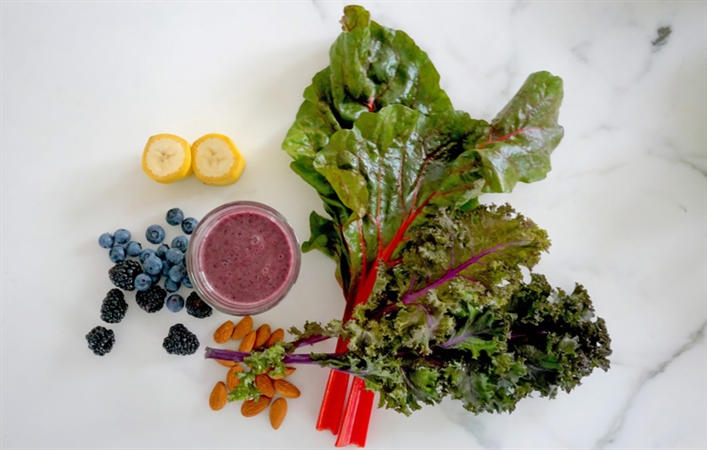Smoothies
Principles
Smoothies can be a easy way to get lots of micronutrients and phytonutrients in a delicious and convenient form. As you probably already know, not all smoothies are healthy, though. Here, we present some principles and tips for building the best versions.
Fundamentally, you want to select ingredients to ensure that our smoothies are high in phytonutrients and fiber. Additionally, you want to mix up the types of smoothies that you make on a day-to-day basis, so that you get a wide range of phytochemicals in your diet and don’t overload on any particular class of nutrients.
Rich in Plant Phytochemicals
We often label certain plant phytochemicals as “superfoods” because they do so many good things for the body, from helping the brain work better to suppressing cancer. Smoothies are an excellent way to get more phytochemicals in your day.

Colors: As a general rule, fruits and vegetables that are deeply colored tend to be more densely packed with phytochemicals. This is particularly true for green leafy veggies. Dark greens, like arugula or kale, are usually a better choice than pale greens like iceberg. Now, this isn’t always true, of course - don’t sleep on light colored phytochemical powerhouses like cauliflower!
Use the skin: Incorporate skins and peels as much as possible in your smoothies. Phytochemicals are concentrated in the outer tissue of plants. For instance, don’t peel carrots, cucumbers, apples, etc. when adding them to the blender. When using citrus fruits, leave as much of the albedo (the white spongy part between the pulp segments) as possible - you will get many times more phytochemicals that way.
Fiber: 10 grams or more
Fiber is important for satiety and for feeding the gut microbiome. We recommend you shoot for 10 to 20 grams of fiber per smoothie. This amount will get you to about a third to two-thirds of the Recommended Daily Intake (RDI) for fiber per day.

Primary Sources: Most fiber will come from the plants incorporated in the smoothies.
Functional Additives: Acacia, oatmeal, oat bran, flax meal, or chia seeds.



